This guide is for users that aim to create a shared filesystem in their virtual machines using the OpenStack Manila service.
The OpenStack Manila service allows the creation of a filesystem that can be shared among virtual machines in the same tenant (intra-tenant) or in different tenants (extra-tenant).
More details on Manila's service can be found here.
Important: In ADA Cloud, it is enabled only the CEPHFS_TYPE share, that allows the creation of a share in the CEPH storage.
Important: Only intra-tenant shares are allowed on ADA Cloud.
A user that would like to make use of the Manila service needs to send an email to superc@cineca.it, communicating how many shares are needed and for each share:
Once enabled by the User Support Team, the user needs to create the share and mount it in a special network interface on the VMs attached to a dedicated storage network.
As an example, in what follows, we will create a share in common between VM_alice and VM_bob belonging to the same tenant.
You can create a share by following the below steps:
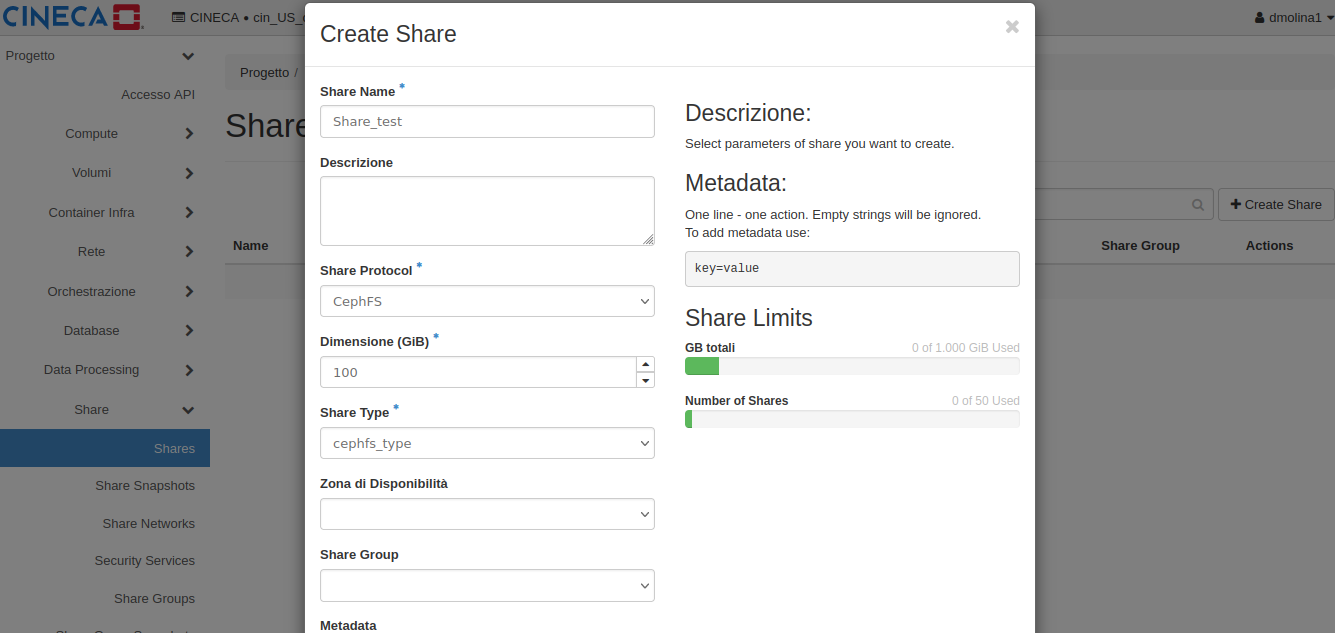

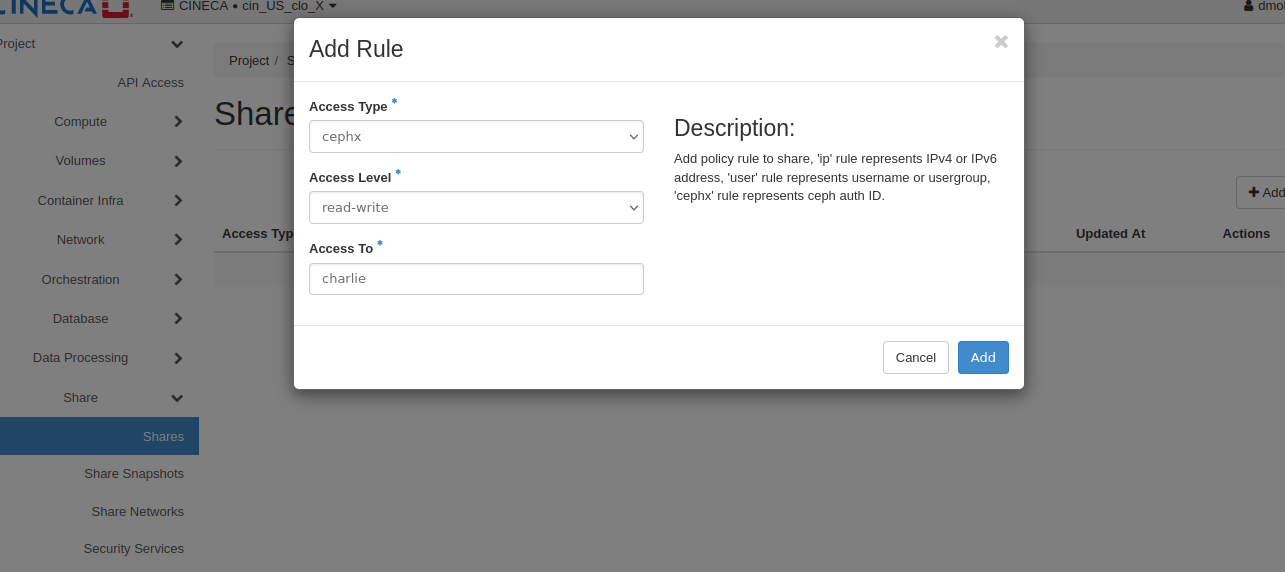
By clicking on the "add" button the dashboard will show the "access key" and "access to" keys that must be used to mount the share on the virtual machines.
The user is now ready to mount the share on VMs. In the following example, we will consider two VM with Ubuntu 20.04 OS.
Please refer to the network guide of the operating system of your VM to be sure about the operations to be done.
Login in the first VM, then:
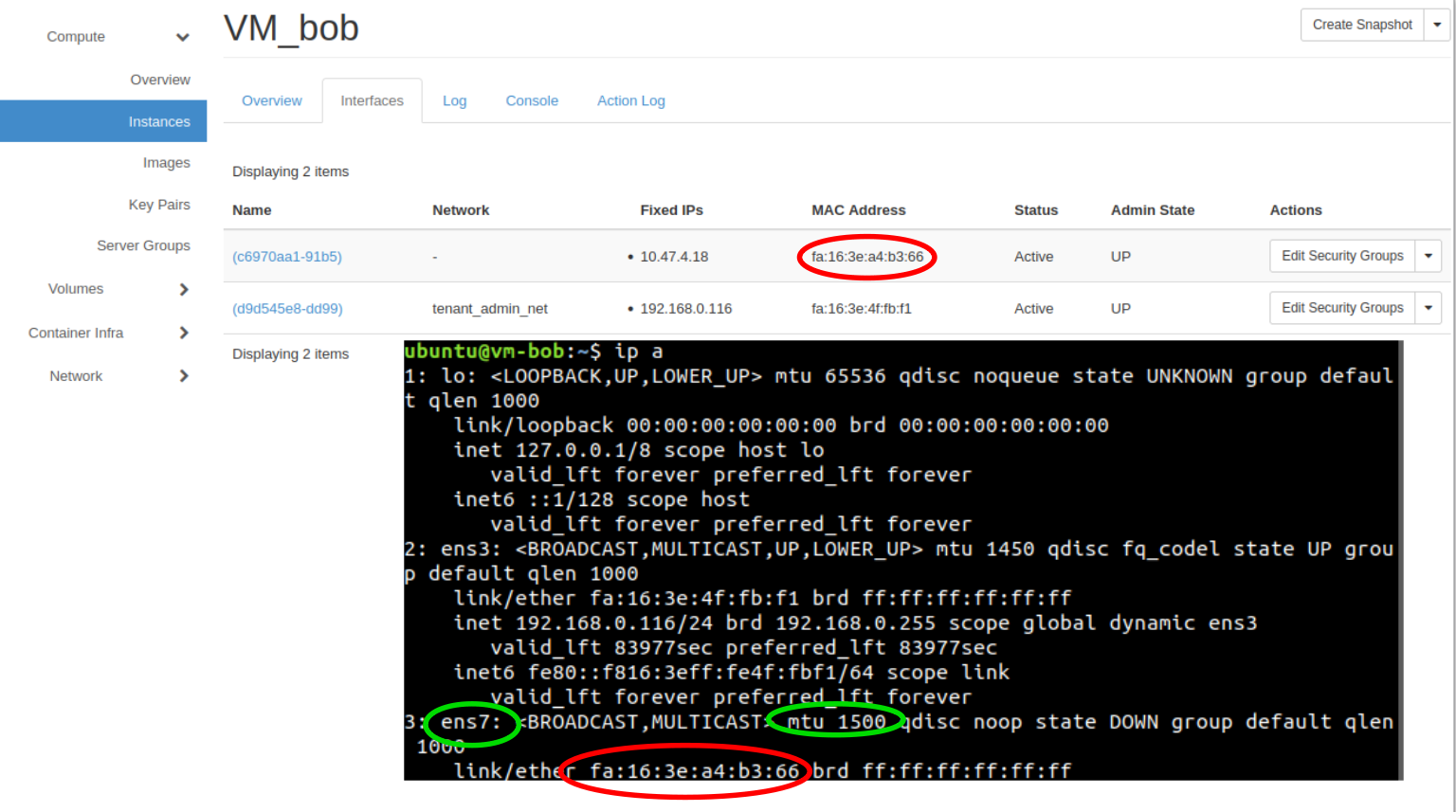
Create a new file in the /etc/netplan directory to configure such new interface (in our example "ens7"), and enable it
$ sudo su
$ cd /etc/netplan
$ cp <file-cloud-init> <file-ens-number> - example: cp 50-cloud-init.yaml ens7.yaml -
$ vim <file-ens-number> ==> Modify the value of the fields "ens", "mtu <value>", "macaddress <value>" and "set-name < value>" with the values shown by "ip a" command.
-- example of the ens7.yaml is --
network:
version: 2
ethernets:
ens7:
dhcp4: true
match:
macaddress: <your MAC address>
mtu: <MTU value>
set-name: ens7
$ netplan apply ==> to enable the new interface
$ ip a ==> check that the interface is enabled |
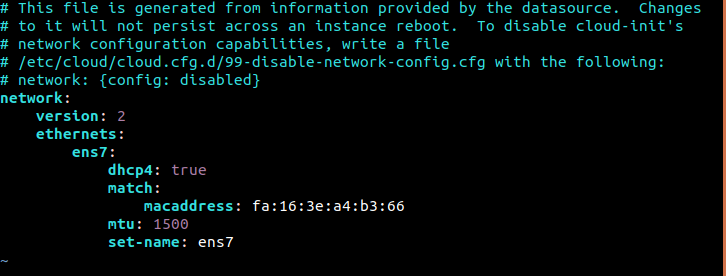
To mount the share you will need some informations contained in the "Share Overview" page on OpenStack dashboard, in particular you will need the values of PATH, ACCESS_TO and ACCESS KEY (here an example):
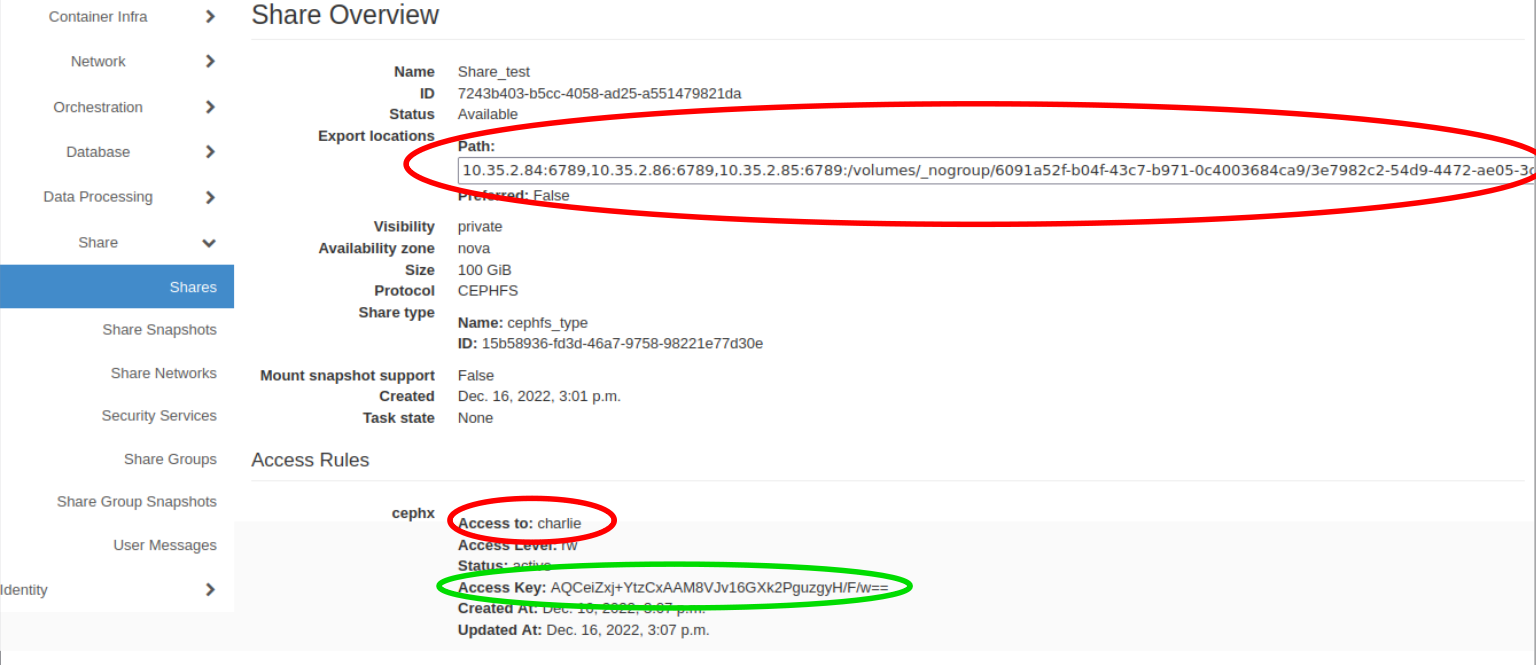
Beware that different versions of ceph-common are available for different versions of Ubuntu and the syntax of the mount command could change.
For Ubuntu 20.04, the command is:
sudo mount -t ceph -v <mount PATH> <mount point on the VM> -o name=<CLIENT_ACCESS_TO>,secret=<ACCESS_KEY> |
An example of the complete command is:
sudo mount -t ceph -v 10.35.1.9:6789,10.35.1.10:6789,10.35.1.11:6789,10.35.1.12:6789,10.35.1.13:6789:/volumes/_nogroup/43aa4ecc-1db6-4952-b2dd-6336b45075d5 /mnt/share_manila/ -o name=my-client-name,secret=AQBP07Nejv/RLhAABYqQ5tvgePh2EP7EL0UuhQ== |
While, for Ubuntu 22.04 and higher the command is:
sudo mount.ceph <CLIENT_ACCESS_TO>@482d24d4-df47-11eb-8d80-0c42a1f53648.g100_fs=<FS_ADDRESS> <mount point on the VM> -o mon_addr=<MON_IPS>,secretfile=<SECRET_FILE> |
Where <FS_ADDRESS> and <MON_IPS> are the two parts of the "Path" string on OpenStack:
Finally, the <SECRET_FILE> is the path to a text file that contains the string <ACCESS_KEY>. Following the same example that uses the picture from above:
sudo mount.ceph charlie@482d24d4-df47-11eb-8d80-0c42a1f53648.g100_fs=/volumes/_nogroup/43aa4ecc-1db6-4952-b2dd-6336b45075d5 /mnt/share_manila/ -o mon_addr=10.35.1.9:6789/10.35.1.10:6789/10.35.1.11:6789/10.35.1.12:6789/10.35.1.13:6789,secretfile=/home/ubuntu/my_secret_file.txt |
NB: If you are using a different Linux distribution, please refer to the ceph user manual to be sure that the syntax you are using is appropriate for the ceph version installed.
Then repeat the same steps for the second VM as well. Now the two VMs share the same filesystem.